Hard disk drive capacity is growing every year but not everybody knows what it takes to increase the capacity of modern HDD. You can buy a 6TB 3.5" drive now and manufacturers saying it's not a limit of magnetic recording just yet. Let's find out what would manufacturers need to do to produce not a 6TB drive but a 60TB one.
Modern hard drives utilize Perpendicular Magnetic Recording or PMR. Theoretical density limit of this technology is 1Tbit per square inch but because drive uses tracks to store data and because of servo system it will give us only 650Gbit per square inch density for user data. This technology may allow building 6.8TB 3.5" five-platter-drive in best scenario.
This barrier of density is caused by the superparamagnetic limit. The general idea of this effect says that if thermal energy of magnetic media is higher than a particular value it can cause random re-magnetization (or magnetic flip) of the magnetic domains (each of them represents one bit of information) which means stored data will be lost permanently. Every type of magnetic media in hard drives has its own superparamagnetic limit.
1TBits per square inch density will require smallest possible (for PMR) magnetic domains.
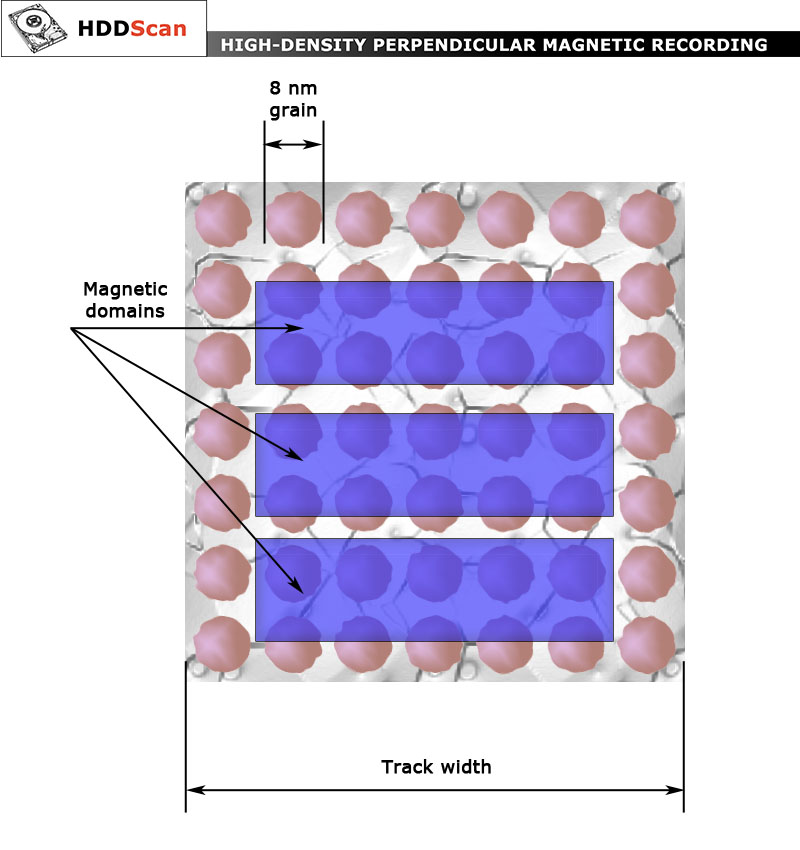
As you can see PMR magnetic domains have rectangular shape, they basically represent the shape of a writing head. And PMR writing head cannot have square shape because of current production technology.
There are two basic ways to reduce effect of superparamagnetic limit. One is to increase size of magnetic domains, bigger domains hold more magnetic energy and that makes them more stable to thermal fluctuations; and the other way is to use magnetic materials with higher coercivity.
Obviously increasing size of magnetic domains will decrease density, so an easy bet would be increasing coercivity. Unfortunately higher coercivity will require more energy for writing head and that means size of a writing head will need to be increased and that means...lower density. We are in a dead loop.
How to beat this limit? Some manufacturers have decided to give hard drives advantage and supply them with "lightsabers". This is technology of the future and it's called Heat Assisted Magnetic Recording or HAMR.
General idea of HAMR is in using magnetic platters with higher coercivity but also giving HDD ability to make coercivity lower when a drive needs to write.
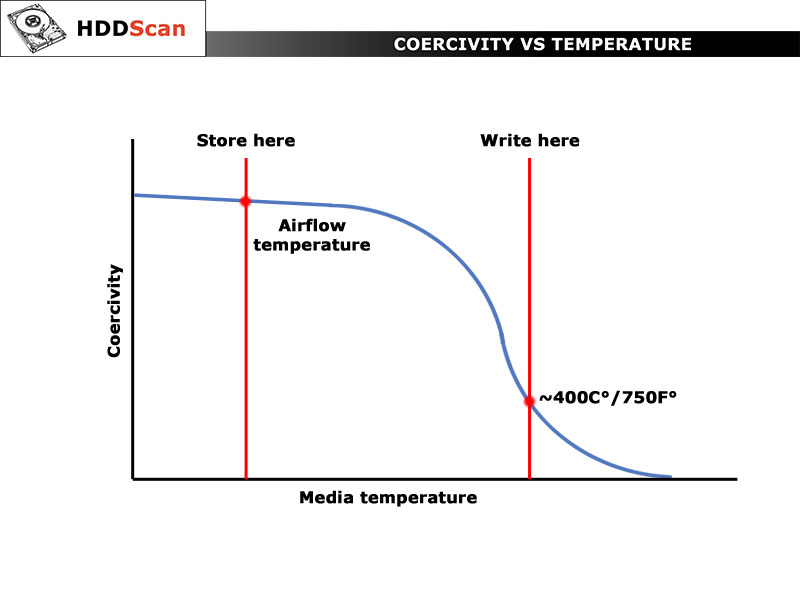
As you can see heated magnetic layer temporary lowers its coercivity and this will allow HDD writing data on magnetic surfaces with higher density.
All what we need to do is to install a small laser on each head which will heat up disk surface when drive needs to write.
Easy to say but this technology is really hard to implement. HAMR would require powerful but small laser, so media can be heated fast enough. Modern lasers which would be powerful enough have blue spectrum, with a wave length of about 400nm.
But wait a minute - this wave length number is way larger than we would need, and if we heat a 400nm spot on magnetic media we can lose data in it. And we couldn't focus laser to a dot smaller than the wave length, or could we?
Here comes quantum physics and plays by its own rules. It says that if taken grating array has aperture size of several nanometers, then visible light (blue for example) will penetrate such grating array only as deep as the diameter of the aperture.
This effect is called the near-field emission with evanescent waves.
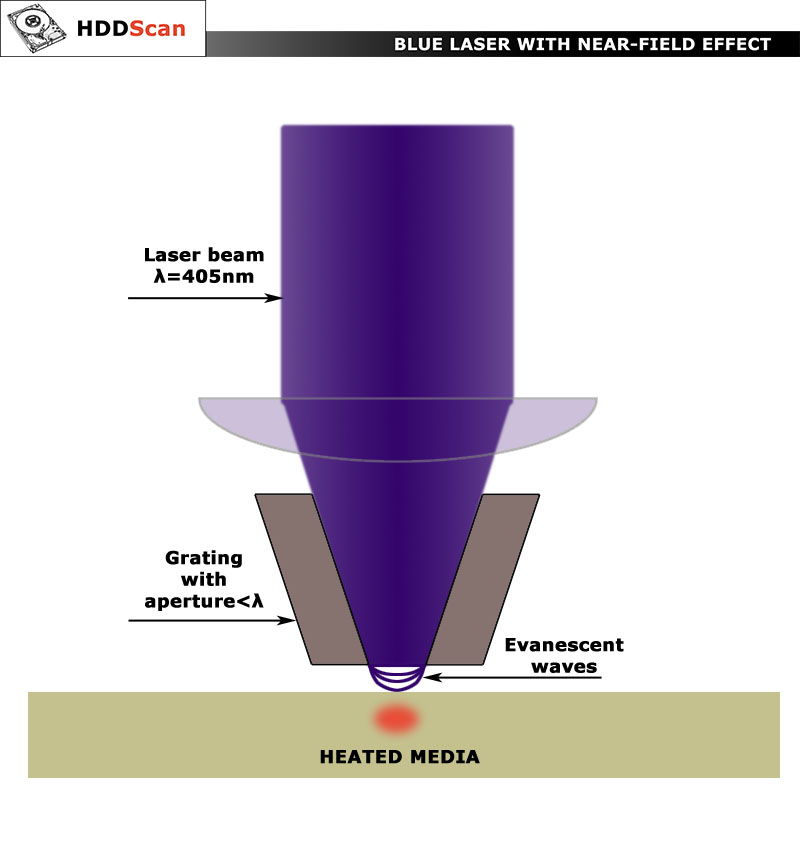
It is possible to heat up a very small spot on rotating media almost immediately with such laser and write in this spot while coercivity is low but it wouldn't solve all the problems. Heating media is one side of the coin but cooling it, is the other. If media is not going to cool down quickly after writing, thermal energy may flip polarity of freshly-written magnetic domain because of superparamagnetic limit. And longer cool down time can "smudge" heat on rotating media and we don't want it.
The solution could be specially designed media.
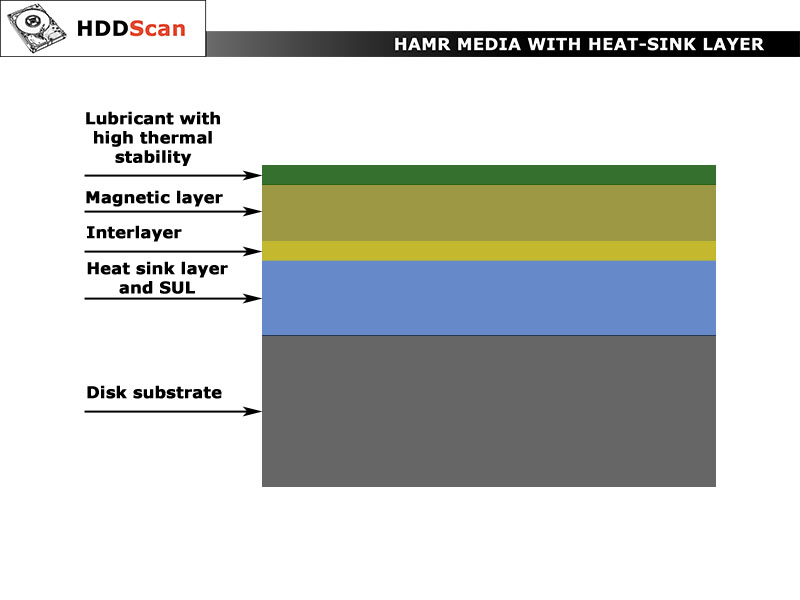
HAMR media should have a heat sink layer (possibly combined with soft underlayer) which would allow magnetic layer cooling down fast. How fast? It is possible to cool media down in 150 picoseconds after heating with this special layer (one picosecond is one trillionth of a second). All modern HDD media have lubricant layer but HAMR media should have lubricant layer with high thermal stability because of obvious reasons. That is actually also a problem but not a big one (I think). What are the bonuses of HAMR?
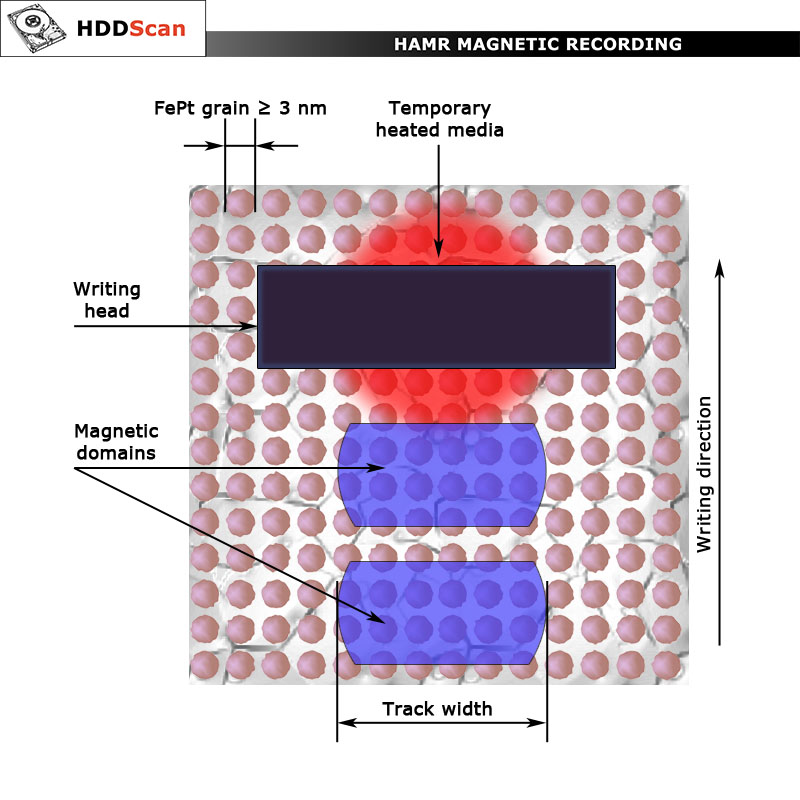
Media could have magnetic layers made of small-grain materials with higher coercivity, for example Iron-Platinum (FePt) or even Cobalt-Samarium (Co5Sm).
Both heated spot on media and writing head shape will form a magnetic domain, so domains can be more square-ish which will lead to higher density.
Because of higher coercivity, domains can become smaller and because of heat-assisted recording we can use smaller writing heads, which also would lead to higher density.
It could be possible to make hard drives with density of 5Tbit per square inch just using HAMR (and this means 30TB 3.5" five-platter-drive). But technologies are evolving and manufacturers thinking about creating special bit patterned media which with HAMR reinforcement could hit 50Tbit per square inch record.
Author: Artem Rubtsov
This article has been written exclusively for hddscan.com
If you would like to publish or reproduce any part of this article on the other Internet recourses you would have to get an agreement signed by the author of this article.

